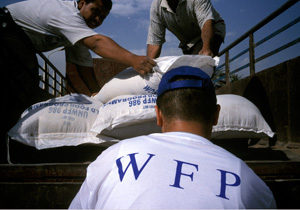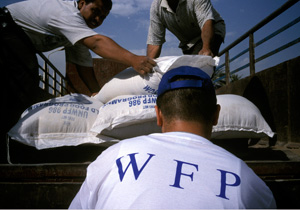-Elizabeth Chinery, Junior Community Outreach Coordinator

UN World Food Programme
Established in 1961, the UN’s World Food Programme was originally an experiment created to provide food aid to countries during times of desperate need or following a crisis. Its current commitment is to end hunger, achieve food security, and improve nutrition by 2030, focusing on “emergency assistance, relief and rehabilitation, development aid and special operations” to reach this goal.
Purchasing over 2 million metric tons of food each year and sending out 5,000 trucks, 20 ships, and 92 planes each day, WFP is able to distribute approximately 12.6 billion rations of food to 80 million people in around 80 countries each year, raking up an average cost of only .31 US dollars per ration. Of these 80 million people include between 20 and 25 million children across 63 countries who are provided school meals every year.
WFP’s efforts do not stop there:
- Even after the subside of an emergency, WFP stays behind to help communities “rebuild shattered lives and livelihoods [and works hard] to strengthen the resilience of [the] people and communities affected by protracted crises.”
- To ensure the authenticity and intergrity of the organziation, WFP “created an Ethics Office in 2008 to ensure that all staff members observe and perform their functions with the highest standards of integrity, as required by the Charter of the United Nations, and in accordance with the Standards of Conduct for the International Civil Service” and “adopted a Whistleblower Protection Policy” to protect individuals who report internal misconduct and wrongdoing as well as “cooperate with a duly authorized audit or investigation.”
Give a donation and support WFP’s goal of ending world hunger by 2030 by clicking the link below!
https://support.wfpusa.org/site/Donation2?df_id=4181&4181.donation=form1&s_src=UNR0000EXwfp
For more information about WFP and its cause:



Post a comment